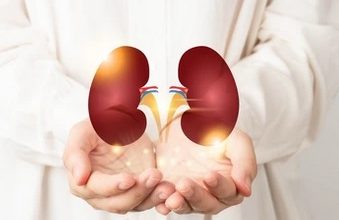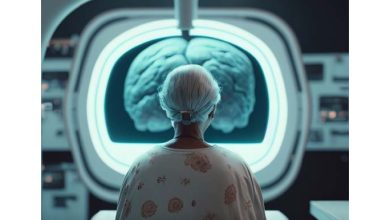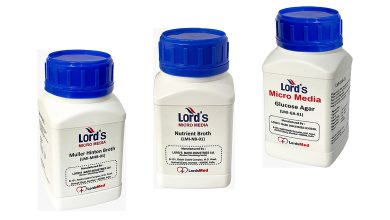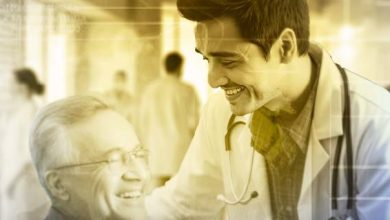The Glorious Past
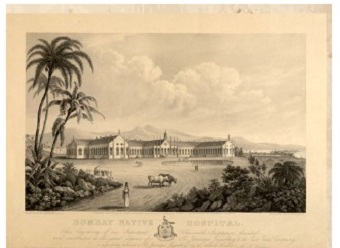
This is a humble initiative to record the history of modern medicine in India.The foundation of modern medicine in India.
As we celebrate the 75th year of Indian Independence, we take a step back to look at the beginning of things. Through this humble effort to trace the development of healthcare service in India, we hope to bring forth many untold stories. This is the first feature in the series which will follow in the coming issues. The practice of medicine as we know it today has a long and winding history in India, which can be traced through the civilisations and those who have ruled the land. Be it the Greek influence from Alexandria or the Mughal flavour from Persia all the different rulers added to the already existing curative knowledge of the natives. In the prehistoric era, evidence of medical practices has been discovered in the ruins of the ancient Harappan civilisation. In addition, Ayurveda is thought to have originated during the Vedic period. Later, with the foreign invasions, Ayurveda took a back seat and different forms of medical practice flourished, under the umbrella of the religion of the land. The modern system of medicine owes its existence to foreign invasion by western business, British rule and the East India Company.
Hospitals
The first documented evidence of the emergence of the modern system of medicine is from the Royal Hospital, Goa. Founded by Afonso de Albuquerque in 1510, the hospital was the first hospital established in India and was one of the best-managed hospitals in the world at that time. The first native Goan to have successfully obtained the diploma of fisico appears to have been Inacio Caetano-Afonso, a native of Piedade. He was examined by the fisico-mor in 1735. His success in practice earned him the title ‘Aesculapius of Goa’. Subsequently, when the East India Company came to India, it also paved the way for the Indian Medical services (IMS). Established in 1612, IMS comprised British surgeons, who were recruited to take care of the British troops and their families in India. The Government General Hospital, Madras was started by them on November 16, 1664, as a small hospital to treat the sick soldiers of the East India Company. Later on, in 1750, it was declared open to the native population. In Bombay, the first hospital was opened in 1676 and Calcutta in 1707-08. During the same era, French rulers built a hospital at Pondicherry in 1701. Hence, Madras was the first city in India to establish the first present-day hospital in India. INHS Asvini, Bombay, established in 1756 was the first of all naval hospitals, which started in the barracks as King’s Seamen Hospital for in- patients.
All these hospitals were started with either the rich and elite or the troops in mind and therefore the native Indians did not find treatment here. It was John Underwood, the company surgeon, who established the first medical facility in 1799 at Monegar Choultry in Madras for the Indians and called it ‘Native Infirmary’. It consisted of a cluster of buildings with the government-maintained asylum for lepers among others. Another institute of importance was the Cama hospital for women and children opened in Bombay under the supervision of Dr Edith Peeheyphipson in August 1886. It was the first hospital for women, managed by women in India.
Other noted hospitals at the time were Gokuldas Sir JJ hospital (1845), KEM hospital (1926) Bombay, Bai Motlibai and Petit Hospital and Albert Edward Hospital at Kolhapur Central India’s tryst with modern medicine began in 1837 when the British officer Dr Bruce a resident surgeon arrived in Indore to look after the British troops and their families. In 1851 there was the Indore Charitable Hospital & the Indore City Dispensary & there were dispensaries in Ujjain, Ratlam, Dhar & Manpur.
A hospital for lunatics was established on May 17, 1918, at Ranchi called the Ranchi European Lunatic Asylum. Lady Willingdon Hospital was inaugurated and started on November 20, 1935, with a major donation by Lady Willingdon, the then vicereine, to serve the people in the Kullu valley. In Ahmedabad, the first indigenous hospital called Seth Vadilal Sarabhai General hospital was started in 1931.
Medical schools and colleges
The year 1835, has a special bearing in the history of medical education in India. Two very prestigious and respected medical colleges in India, Calcutta Medical College and Madras Medical College admitted students for the first time in 1835. The Calcutta Medical College was not only the first institute to teach modern medicine in India but also in Asia. In Bombay the first medical college was named after Sir Robert Grant, then Governor of Bombay and the college started functioning in 1845. Previously in 1823, a medical college called the Ecole de Medicine de Pondicherry was established by the French government in Pondicherry. Other reputed medical schools of the era were The Auxiliary Royapuram Medical School, Madras (1877) and The King Edward Medical School, Indore 1878. Stanly medical school named after Sir Frederick Stanley on March 27, 1917, was earlier known as Royapuram School established in 1913 in Madras. The privilege of establishing the first Dental college in India goes to Dr Rafuddin Ahmed who founded India’s first Dental College in Calcutta in 1928 from his earnings and real hard work.
The Gordhandas Sunderdas Medical College and the KEM hospital arose as a counter to British-managed hospitals in 1925. The most important condition of the endowment was that all members of the teaching faculties should be well-qualified Indians. Dr Jivraj Mehta was its first dean. In pre-independence India Calcutta was the hub of medicine, madras was the nucleus of obstetrics and gynaecology and Bombay was the focal point
for surgeries.
Medical education and women
The participation of women in medical practice started as early as 1880 when Fanny Butler became the first British woman to practice medicine in India. She served as a member of the church of England (Zenana Missionary society) and carried out pioneering work among Indian women. Next, in 1885, The Countess of Dufferin’s Fund was created to bring women doctors to India and open women’s hospitals and wards, and train Indian women in Medicine. Lady Reading Health School, Delhi. During that period Madras Medical College had already become a trendsetter and admitted women students for the first time in India. 1875, when only one institution in the US was open for women and none in Europe. Later Calcutta Medical College started admitting women in 1885 and in 1887 Grant Medical College in Bombay followed suit. Further, Madras Medical College had the privilege of producing four fully trained women doctors in 1878. They were Mary Scharleib, Miss D White, D Mitchell, and B Beate. Interestingly, a special scholarship of Rs 20 was awarded to every woman candidate for her five years of studies in Medical College.
Consequently, Dr Edith Mary Brown and her colleagues started the North Indian School of Medicine for Christian Women in 1894. Special mention of Christian Medical College, Vellore which was started as a Clinic in 1900 by Ms Scudder. Later, she started a school for compounders (1903), a school for Nurses (1909) and finally a medical school for women in 1918. Lady Willington Medical School for Women founded in 1923 in Madras and Lady Hardinge Medical College, 1916, Delhi are among the oldest women’s medical colleges in the country. Lady Reading health school, Delhi and Lady Dufferin hospital, Calcutta Founded in the year 1925 in Patna, with
35 students on the rolls was earlier known as Prince Of Wales Medical College.
In 1907, the association of Medical women in India was founded under the leadership of Dr Annetie Benson of the Cama hospital in Bombay 1938. The first all-India Conference of Medical Women was convened in Delhi the principal subjects addressed included anaemia and eclampsia.
Nursing
10 nursing sisters, who arrived here from England in February 1888, birthed the nursing profession in India. The first Indian nurse Bai Kashibai Ganpat of Thane was trained at JJ Hospital, Bombay in the year 1891. The
first Nursing school in India was established at Cama Hospital, Bombay in 1886. The Association of Nursing Superintendents was founded in 1905 in Lucknow, which was later amalgamated in 1922 and called The Trained Nurses’ Association of India (TNAI). Lady Reading Health School, Delhi was established in 1918 under the Countess of Dufferin Fund for training Nursing personnel for MCH Programme.
During the Second World War, there was an acute shortage of nurses of one nurse for every 50 to 60,000 of the population. Hence, a short course of intensive training in nursing was initiated for the first time in 1942, which was called the auxiliary nursing service. About 3000 young women of India, of all castes and creeds, were given this intensive training and enrolled. In India, the first nursing college was set up in New Delhi in 1946, now known as Rajkumari Amrit Kaur College of Nursing.
Pioneers of Indian medicine
The first four men to qualify in Western medicine from the Calcutta Medical College in 1838 were Uma Karan Set, Dwarka Nath Gupta, Raj Kristo Dey and Nobin Chander Mitter. The first batch of students admitted to the Grant Medical College, Bombay, in 1845, was awarded the diploma ‘Graduates of Grant Medical College,’ (GGMC) in 1851. They were Bhau Daji Lad Parsekar, Sebastian AD Carvalho, Atmaram Pandurang Tarkhad, Paul Frances Gomes, Merwanjee Sorabji, Burjorji Dorabji, Anant Chundroba Dukle and JC Lisboa.
Sarjoo Coomar Goodeve Chauckerbutty was the first Indian to enter the Indian Medical Service as Assistant Surgeon on January 24, 1855.
Kadambini Ganguly was one of the first female graduates of the British Empire and the first female physician of South Asia to be trained in European medicine. Ganguly studied medicine at Calcutta Medical College. In 1886, she was awarded a GBMC (Graduate of Bengal Medical College) degree, which gave her the right to practise. She thus became the first Indian woman doctor qualified to practice western medicine. The first Indian woman to graduate in western medicine is believed to be Anandibai Joshi of Pune, in the year 1886. She was the first Brahmin student from Pune. She took her training in the United States of America at The Woman’s Medical College, Philadelphia and completed her M.D. in 1886. She was greatly encouraged by her husband Gopalrao, a clerk in the postal department who strongly advocated women’s education. Soon after her return to India, she was appointed as a physician in charge of the female ward of the Albert Edward Hospital at Kolhapur. She however died of tuberculosis at the age of 22 years in 1887.
Muthulakshmi Reddy was the first Indian woman to get the MB and CM, in 1912, topping her Madras Medical College class in surgery and becoming the first woman surgeon in India. She was to go on to become the first
woman legislator in India and the first Woman Deputy President of a Legislative Council, presiding over its proceedings many a time. In 1907, she joined the Madras Medical College, where she achieved a brilliant academic record. With several gold medals and prizes to her credit, Muthulakshmi passed out in 1912 to become the first woman surgeon in the country.
Upendranath Brahmachari was a noted Indian scientist and a leading medical practitioner of his time. He synthesised Urea Stibamine (carbostibamide) in 1922 and determined that it was an effective substitute for the other antimony-containing compounds in the treatment of Kala-azar (Visceral leishmaniasis) which is caused by protozoa, Leishmania donovani. He was a nominee for the Nobel Prize in 1929 in the category of physiology and medicine.
For his achievements, he received many awards. Most notable among them are, the Griffith Memorial Prize of the University of Calcutta, the Minto Medal by the Calcutta School of Tropical Medicine and Hygiene (1921), the Kaisar-i-Hind Gold Medal by the Governor General Lord Lytton (1924), Knighthood by the British Government (1934) and Sir William Jones Medal by the Asiatic Society of Bengal. He was honoured with the fellowships of the Royal Society of Medicine, London and the National Institute of Sciences of India. He was the President of the Asiatic Society of Bengal for two years (1928-29).
Rai Bahadur Hari Ram started private practice in radiology along with his general practice in 1932, but exclusive radiology practice was started by Dr SC Sen in 1933 who later became a founder member of the Indian Radiological Association (IRA). He had a 150 mA unit. Dr Sen claimed two other ‘firsts’ to his credit. He started deep X-ray therapy in New Delhi in 1935 with a 180 kV machine and also started group practice. His Highness Maharaja Thakore Sir Dr Bhagvatsinghji Sahib, Maharaja Thakore Sahib of Gondal was an immensely progressive and enlightened Maharaja of Gondal and the only ruler of a princely state to take a medical degree.
Perhaps the first woman anaesthetist in the world and in India, Roopabai Ferdunji worked in Hyderabad in 1889; she later went to Edinburgh for further studies.
Auxiliary services
St John Ambulance a leading first aid, transport and charity care organisation was established in India in 1873. In 1912 the St John Ambulance Association was granted autonomy and the Council was established. The first Nursing Division was established in 1913. The first Cadet Division was established in 1925. On 7th June 1920, fifty members were formally nominated to constitute the Indian Red Cross Society and the first Managing Body was elected from among them with Sir Malcolm Hailey as Chairman. The Indian Council of Medical Research (ICMR) established in 1911 has a network of 21 permanent research institutes and six regional medical research centres distributed throughout the country. The Medical Council of India was established in 1934 under the Indian Medical Council Act, 1933.

